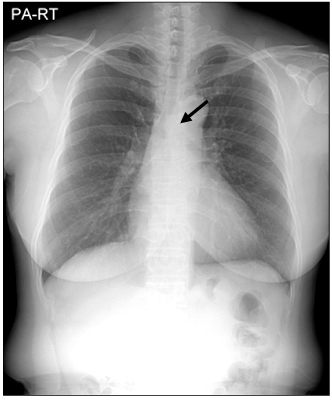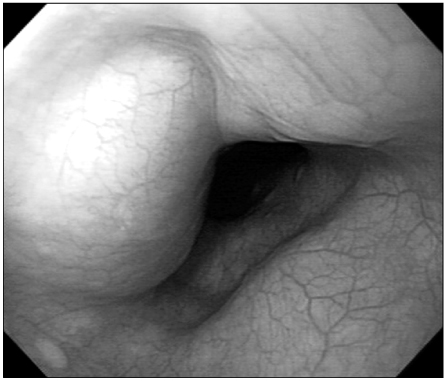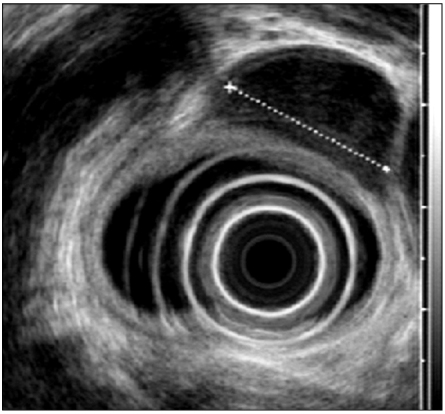Tuberc Respir Dis.
2009 Jun;66(6):482-485.
The Importance of the Simple Chest X-ray Tend to Make Careless Interpretation: with a Case of Mediastinal Tumor
- Affiliations
-
- 1Department of Internal Medicine, Yonsei University College of Medicine, Seoul, Korea.
- 2The Institutes of Chest Diseases, Yonsei University College of Medicine, Seoul, Korea.
- 3The Institutes of Gastroenterology, Yonsei University College of Medicine, Seoul, Korea.
Abstract
- The middle mediastinum contains several important organs and pluripotent cells. It is difficult to make a definitive diagnosis in patients with middle mediastinal tumors due to a wide range of diseases. The likelihood of malignancy is influenced primarily by the following factors: patient age, size, tumor location, and the presence or absence of symptoms. We describe a case of a middle mediastinal tumor, which was suspected on chest x-ray; chest computed tomography revealed the eccentric mass of distal esophagus. This case emphasizes the diagnostic importance of the chest x-ray to the physicians. The possible differential diagnoses are reviewed.
Keyword
Figure
Reference
-
1. Lee HL, Kim SK, Kim HK, Chung KY, Lee DY, Kim SE, et al. Clinical study on primary mediastinal tumors and cysts: report of 344 cases. Tuberc Respir Dis. 1993. 40:575–583.2. Davis RD Jr, Oldham HN Jr, Sabiston DC Jr. Primary cysts and neoplasms of the mediastinum: recent changes in clinical presentation, methods of diagnosis, management, and results. Ann Thorac Surg. 1987. 44:229–237.3. Choong CK, Meyers BF. Benign esophageal tumors: introduction, incidence, classification, and clinical features. Semin Thorac Cardiovasc Surg. 2003. 15:3–8.4. Choi SW, Park H, Lee SB, Chung JP, Lee SI, Hong SW. Three cases of secondary esophageal tuberculosis presenting as an esophageal submucosal tumor. Korean J Gastrointest Endosc. 2005. 30:80–85.5. Huang YK, Wu YC, Liu YH, Liu HP. Esophageal tuberculosis mimicking submucosal tumor. Interact Cardiovasc Thorac Surg. 2004. 3:274–276.6. Macchiarini P. Primary tracheal tumours. Lancet Oncol. 2006. 7:83–91.7. Macchiarini P, Ostertag H. Uncommon primary mediastinal tumours. Lancet Oncol. 2004. 5:107–118.
- Full Text Links
- Actions
-
Cited
- CITED
-
- Close
- Share
- Similar articles
-
- Mediastinal Cavernous Hemangioma Involving Whole SVC: A case report
- Spontaneous Hemothorax in a Patient with Posterior Mediastinal Neurilemmoma: A case report
- Anti-N-methyl-D-aspartate Receptor Encephalitis Caused by a Mature Mediastinal Teratoma
- Capillary Hemangioma in the Posterior Mediastinum: A case report
- Tuberculous mediastinal lymphadenopathy





